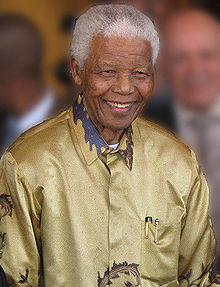The Nuclear Assassins

Litvinenko had committed suicide to cause trouble for President Putin. What a nonsense.
Warsaw-Poland: The case of Alexander Litvinenko is probably not the first of its kind. A former KGB and FSB covert agent, specially sent to Britain to kill a Russian billionaire and Putin’s opponent, Boris Berezovsky, did not carry out his secret mission and defected six years ago. Just a month ago, he became a British subject. Protected by MI5 and the Police, he became known as a fervent opponent of President Vladimir Putin and of his KGB-derived establishment, presently ruling over Russia. A price for granting him political asylum in Britain must have been his voluntarily sharing of FSB secrets with the British counter-intelligence and intelligence services. Just enough to be rewarded by a death-sentence in Russia, according to a new bill passed in 2006 and allowing the Russian secret services to execute their “traitors” abroad. But also to scare some of his former colleagues, ex-KGB agents, now living in the West and afraid to be exposed.
Oleg Gordievski, a former KGB “station-chief” in Britain, who defected in 1985, and a well-known critic of the Soviet’s and Russia’s ruthless methods, told the Polish Radio in Warsaw that his good friend, “Sasha” Litvinenko, had some trouble with the KGB and the FSB before. He was even put into prison twice and, when released, fled to Britain via Turkey. Before falling ill, about three weeks ago in London, Litvinenko met with two former KGB agents and drank a cup of tea with them in a hotel bar (he was a rare brand of a Russian, abstaining from alcohol). This cup of tea – claimed Gordievski – was “treated” with Po-210, causing devastating effects in Sasha’s body and his ultimate death a few weeks later. One of these Russian ex-spies, Andrei Lugovoy, came forward in Moscow and “said they had met to discuss a business project at Mr. Litvinenko’s request and that he had nothing to do with the former spy’s death” (Peter Graff, Reuters). But Mr. Gordievski was sure not telling that these “businessmen” effectively planted the deadly radio-isotope into Litvinenko’s cup of tea.
No proof has been established so far, of who in fact caused the poisoning of the Russian defector, and in whose interest his assassination could have been. Soon emerged several “conspiracy theories”, like the one mentioned by many British and American newspapers on Sunday: Litvinenko had committed suicide to cause trouble for President Putin. What a nonsense. A relatively young (43), fit and full of life-energy man, actively working against the Putin’s regime certainly had no reason to sacrifice himself, and with the use of a deadly nuclear poison. If seems that some leftist British papers perpetuate this false story to appease President Putin. The fact that before his end Litvinenko dictated a farewell letter, claiming that Putin was guilty of his death is no proof at all. British investigators, who are already working on this case, did not put forward any accusations against the Russian President.
One thing is perfectly sure: the FSB had plenty of reasons to kill their “black sheep” in Britain, or anywhere in the world. I have heard stories from former Russian spies about dispatching Spetsnaz killers even to Australia and South Africa to carry out their mission. And Gordon Thomas, in his bestseller Gideon’s Spies, described similar actions of Mossad’s kidon squads, one being the assassination of Robert Maxwell, the late British billionaire and Israeli spy then a “traitor”, put to death by a shot of poison and dumped into the sea from his own luxury yacht Ghislaine near the Canary Islands.
Yet, as the use of poison by spy-services can be traced to ancient Egypt and China, more than 5,000 years ago, not much has surfaced so far about the application of nuclear materials for individual assassinations. The nuclear devices, from heavy warheads and bombs to small “suitcase” demolition charges, have been identified always with mass homicide and total destruction. This time, perhaps the first, Alex Litvinenko’s father, Walter, emotionally revealed: “My son died yesterday. He was killed by a little, tiny nuclear bomb.” Has the epoch of “nuclear assassins” begun?
A “Polish” trail to Po-210
In 1898, a Polish-born chemist Maria Sklodowska-Curie (then a Nobel Prize Laureate, together with her husband Pierre Curie) discovered a new chemical element and named it “Polonium” (a derivative of “Poland”). This natural isotope was discovered in uraninite (pitchblende) from Jakimov in Bohemia. Polonium was later proven to be a product of disintegration of Radium – so called Radium F.

Polonium 210 is highly dangerous to life, if it is taken into the body – by breathing it, drinking or eating, or if it gets into a wound.
The natural isotopes, Polonium 208 and 209, occur in trace quantities in some minerals – they are the “daughter products of the decay of uranium” (Dr. Andrea Sella). Polonium 210 is a synthetic and small amounts of it (no more than 100g/year) are made every year in specialist laboratories by bombarding bismuth with neutrons in a nuclear reactor.
Polonium 210 is highly dangerous to life, if it is taken into the body – by breathing it, drinking or eating, or if it gets into a wound. But it is not a radiological hazard as long as it remains outside the human or animal body. This isotope, however, is the only component of cigarette smoke that has produced cancers by itself. A really killing agent, indeed. See the description of handling of Po-210 on the Web page of
Its practical applications are also just a few: as a single gram of Polonium-210 generates 140 watts of heat energy, it is used as a heat source for satellite power supplies, and as an alpha particle source. It can act as a portable source of neutrons, which normally only access to a nuclear reactor can provide.
Being very rare, Polonium-210 is very expensive and hard to get. Dr. Andrea Sella, a lecturer of chemistry at University College London, told Peter Graff of Reuters: “This is not a random killing. This is not a tool chosen by a group of amateurs. These people had some serious resources behind them.” What people? We still don’t know. Po-210 is produced in nuclear reactors and particle accelerators in very few countries of the world: primarily in the United States, but also in Russia and China. The “Polish” trail leads only to the origins of this deadly isotope, a Chinese (or Russian) trail might lead to the producer of a dose, which killed Alexander Litvinenko. But the minute amount of Polonium-210 that killed the Russian ex-spy might also come from a nuclear waste and it had been used by criminal, who had a contract on Litvinenko’s life.
From Russia, via the KGB
The discovery of Polonium-210 used as a killing tool against the ex-FSB spy, Alexander Litvinenko, reminded me of some events I observed or took part in during the early 1990s. Following a meeting with my long-time friend, a nuclear physicist and a former head of the Atomic Energy Commission of Israel – Mr. Shalheveth Freier – I volunteered to monitor the illegal trade of nuclear materials, technology and weapons between the states of the former USSR and the outside world. This meeting, arranged at the historical King David Hotel in Jerusalem, in February 1992, had started my “private investigation”, which lasted several years and covered about 20 countries. Shalheveth Freier died in 1994. Earlier in the same year, I obtained from a London-based intelligence source a full commercial offer for the sale of Polonium-210 and a number of other rare isotopes. This offer had the original markings and stamps of a Russian military nuclear laboratory, affiliated to a commercial enterprise “Promekologia”, singled out by a decree of the then President of the Russian Federation, Boris Yeltsin, as a channel for exports of nuclear materials.
If I remember well, the price of one gram of Polonium-210 exceeded 2,000,000 US dollars, and the prices of other rare isotopes reached even $4,000, 0000. I was asked to try to sell these products. The copy of the Russian offer and contract was faxed to Rehovot in Israel for examination. The result was positive, showing that the documents and technical descriptions were authentic. Then, I offered these products to a president of a U.S. corporation, Aerospas, based in Atlanta, Georgia. The President of this corporation, mainly dealing in aircraft parts, Dr. Amin Ghanem, was well known to me through a number of previous phone and fax contacts on nuclear materials from Russia. He made frequent trips to Europe on his executive jet, looking for “special products”.
His answer to my offer was positive. He told me these isotopes were hard to sell but very valuable. The Russian offer and the technical specifications were sent to Los Alamos National Laboratory and to nuclear labs in California. But there was no deal, as – in the words of Dr. Ghanem – these labs could not obtain bank credit to purchase the wanted isotopes. Some readers wrote to me, asking about the Atlanta-based company, because they couldn’t locate it or find anything about Dr. Amin Ghanem on the Web. I have exact information about this one and about a number of other U.S. business companies, which engaged into the nuclear trade with Russia, both legally and illegally. Two companies owned by Dr. Amin Ghanem were listed in the Atlanta Business Directory still in the last year, and the Dr. Ghanem’s office was located on a map.
In that case, the Russian offer was at least legitimate, backed by the government and handled by a Russian secret service. The “end users” of the isotopes were also legal and government-sponsored American laboratories. But a lot of the trade in nuclear materials, weapon parts and even in people (nuclear specialists) were “black market deals”, often handled by Russian, Chechen or other mafias. And the End User Certificates, demanded for legal trade in nukes, were often made under a false flag.
In the 1990s, I was also in China, a number of times. I learned about the Chinese military intelligence handling Russian nuclear products and selling them to unknown customers via Hong Kong companies, often owned by the Chinese Intelligence. China was aggressively trading in nuclear materials, weapon parts and designs, for its own sake and also providing them to such foreign countries as North Korea, Pakistan, Libya, Indonesia, Iraq and Iran. In some cases, the original source of these materials was Russia, the Ukraine and Kazakhstan. In most of the cases, which I could examine, the handlers were intelligence services on the seller’s and buyer’s side.
The world of nuclear assassins
In spite of my long, over 40-year-long connection with the particular world of the nuclear weapons policy, I have never run into a proven case of using nuclear materials for deliberate assassination. But the intelligence underworld develops according to its own rules. From the early 1940s, when Polonium-210 was used in the Manhattan Project as an initiator of a chain reaction in the atomic bombs, this rare product of the nuclear reactor technology might have found new applications. One of them has been just proven by the recent killing of Alexander Litvinenko in London. A defector from the GRU told me some time ago: “David, mind you, they never forget”. They, the intelligence services of major world or regional power probably don’t mind spending two or three million dollars on a tiny sample of Polonium-210 to get sure that their “target” has been properly killed.
A few days ago, a liberal writer from Berkeley, California, reacted to the Litvinenko assassination with an outburst of an apocalyptic vision: “What the heck is Polonium? It is extremely dangerous, about 200 billion times as toxic as cyanide. A piece so small it can’t be seen with the naked eye could kill many people. Anyone who had contact with the unfortunate ex-spy may also have been exposed. Dozens, maybe hundreds of people may be doomed to die of cancer if the Polonium contaminated any location this man frequented before his death, though authorities are downplaying any possible danger. I hope they are right.” (Doug Stych, writer, Berkeley, California).
True or not, somebody, or rather an organization who can serve itself with a deadly nuclear isotope to kill a single victim, can also use it against more people. Is Po-210 one of the future terrorist weapons? Will it be used by al-Qaeda in Britain or in the United States to kill more men, women and children and create panic? The high price of this unique nuclear product is not a hindrance to such acts of terror. They can afford it.
sfux - 27. Nov, 08:09 Article 10194x read
















































